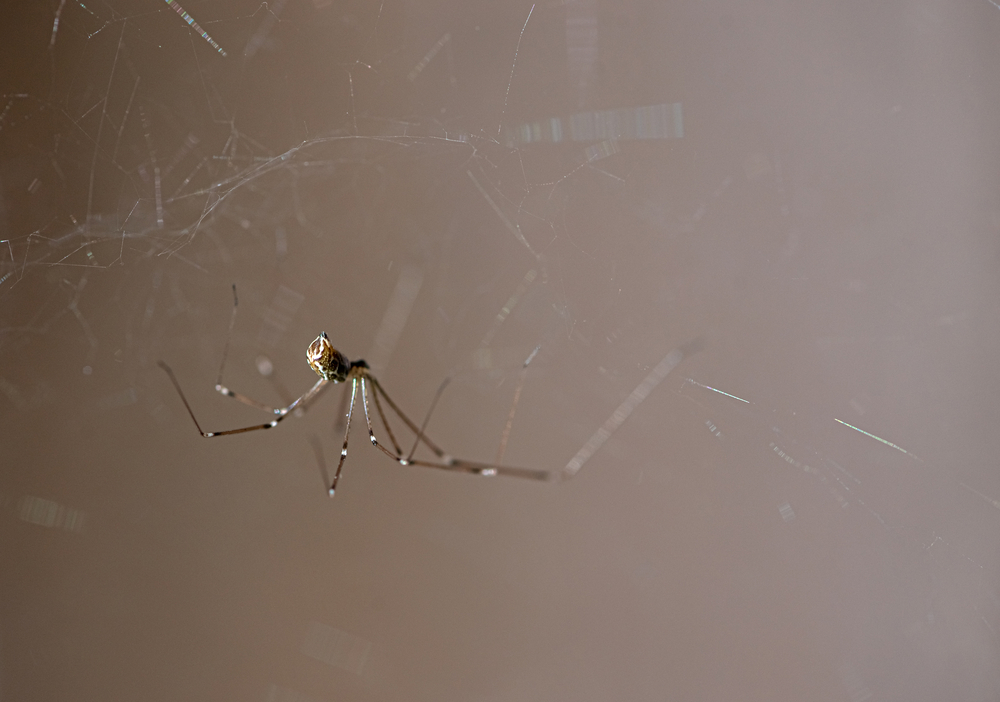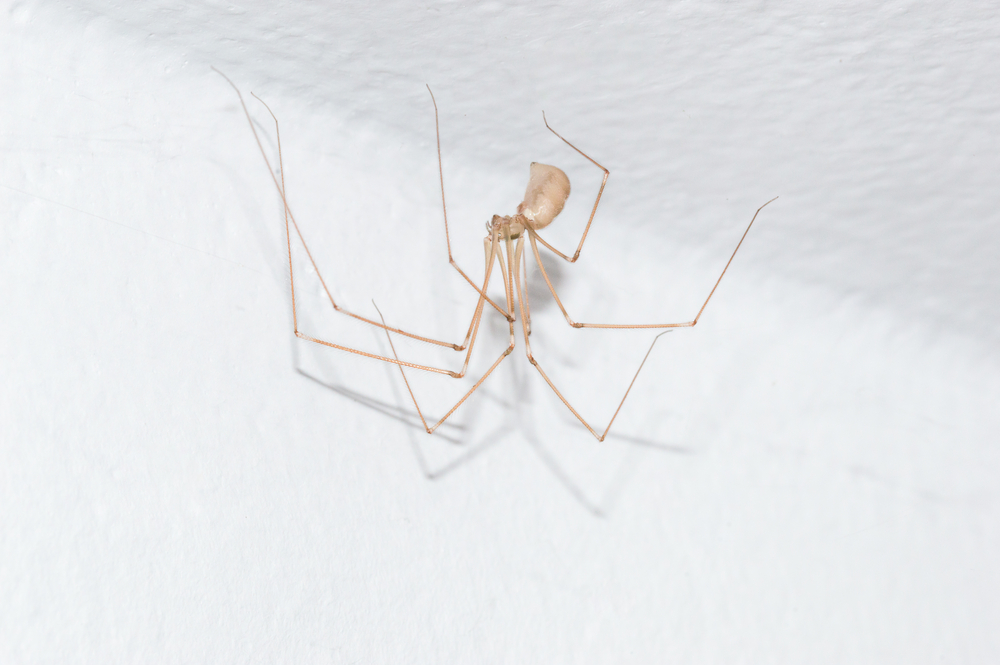Are you interested in learning more about the fascinating daddy long legs spider (Pholcus phalangioides)? Also known as the long-bodied cellar spider, it is an incredible creature that can be found in many parts of the world. From its habitat and diet to reproduction and lifespan – this article will cover all there is to know about these remarkable spiders. With some helpful observation tips along with interesting facts too, get ready for an educational journey into the life of a daddy long legs spider.
Overview
The Pholcus phalangioides, commonly known as the daddy long legs spider, carpenter spider or the cellar spider (due to its preferred habitat), is a species of arachnid that belongs to the family Pholcidae and order Araneae. This species can be found in many parts of Europe, North America and South Africa.
How To Identify a Daddy Long Legs Spider

The daddy long legs spider has an elongated body with eight very long legs, which gives it its common name; however, its bodies are usually no more than 8mm in length.
Their colouration varies from light grey to dark brown, and they have two rows of eyes on each side of their head. They also have a pair of appendages called pedipalps located near their mouthparts which help them sense prey and other objects around them.
Daddy Long Legs Habitat
Daddy long-leg spiders are found in a variety of habitats around the world. They are typically found living indoors where there is plenty of food available for them, such as in kitchens or bathrooms; however, they can also be seen outdoors under rocks or logs during warmer months when there is more insect activity present. They prefer humid environments, so you may find them hiding in damp areas like basements or cellars too, hence their common name, cellar spider.
Diet Of The Daddy Long Legs Spider
The daddy long legs spider’s diet consists mainly of small insects, such as flies and moths, which they capture with their webs. They will also consume smaller arthropods like centipedes and millipedes if available. They have been observed to feed on dead insects, too, when live prey is not present.
Observation Tips
Observing the daddy long legs spider can be a fascinating experience. Here are some tips to help you get started:
Time of Day
The best time to observe these spiders is during the day when they are most active. They tend to hide in dark corners and crevices during the night.
Location
These spiders prefer warm and humid places such as basements, attics, closets or even garages. Look for webs near windowsills or other light sources where they may have built their nests.
Environment
Daddy long legs like areas with plenty of food sources such as flies and mosquitoes, which can be found near water sources or damp areas like bathrooms and kitchens. Avoid spraying insecticides around them since this could harm them instead of helping your observation efforts.
Behavior & Habits

When observing these creatures, it’s important to remember that they’re not aggressive by nature, so don’t be afraid if one crawls on you – just gently brush it away. You’ll often find them hanging upside down from their webs waiting for prey, but sometimes they will wander off looking for food, too, so keep an eye out for movement nearby.
Equipment
A magnifying glass is a great tool to use when trying to observe these creatures up close without disturbing them too much. It also helps if you have binoculars handy so that you can spot any potential nesting sites from afar before getting closer for better viewing opportunities.
Daddy Long Legs Reproduction and Lifespan
These spiders are unique in their reproduction and lifespan:
Reproduction
The female daddy long-legs spider will lay her eggs inside a sac which she attaches to her web or hides in crevices or other places around her habitat. She then guards this egg sac until it hatches. The young spiders emerge from the egg sac after about two weeks, and they moult several times before reaching maturity at around four months old.
Lifespan
Once mature, these spiders typically live for one to two years, although some have been known to survive up to three years under ideal conditions. During this time, they may produce multiple generations of offspring if food sources remain plentiful and temperatures stay within an acceptable range for them to thrive.
Mating Habits
Daddy long-legs spiders do not mate directly with each other; instead, they rely on indirect contact through webs and pheromones released by females during mating season (typically late summer). Males will locate females by following trails left behind by their pheromones and then attempt to court them using elaborate courtship rituals involving dancing movements and vibrations sent through their webs. If successful, males will deposit sperm onto the female’s abdomen, where it is stored until she lays her eggs later on in the season.
Daddy Long Legs Interesting Facts
- Cellar spiders have an elongated body and eight long legs that can span up to 6 cm (2.4 inches). The colouration of this spider ranges from light grey to brownish yellow with darker markings on its abdomen.
- One interesting fact about these spiders is their ability to vibrate rapidly when disturbed or threatened. This vibration helps them avoid predators by confusing them and making it difficult for them to locate the spider’s exact location.
- Another unique characteristic of Pholcus phalangioides is its web structure which consists of a tangled mass of threads suspended between objects such as trees or walls. These webs are used primarily for protection rather than catching prey since they do not have sticky silk like other spiders do; instead, they rely on their vibrations to capture prey items that get caught in their webs.
- These spiders also possess two specialised organs located near their mouthparts called pedipalps which help them sense and manipulate food items before consuming them.
- Additionally, these organs are used during mating rituals where males will present females with gifts such as dead insects wrapped in silk before courtship begins.
Daddy Long Legs FAQs
Are daddy long legs venomous?
Daddy long legs spiders contain venom and can bite humans. However, there has been no evidence to suggest that their fangs are long enough to penetrate human skin or that their venom is poisonous or fatal to humans. Their jaws are very weak, too, so even if they bit a human, it would be unlikely to have any effect. Their venom is used to capture prey, including other spiders. So, in short, yes, daddy long legs are venomous but not dangerous to humans.
Do daddy long legs bite humans?
No, daddy long legs spiders (also known as the cellar spider) do not bite humans. They are harmless and typically found in dark corners of homes or other buildings. They feed on insects and have no venomous fangs to penetrate human skin. While they may be seen crawling around people, they will not cause any harm or discomfort if left alone.
How do I get rid of daddy long legs spiders?
Daddy longlegs can be removed by vacuuming them up or using a spider catcher. If you have an infestation, it is best to contact a professional pest control service for assistance. Additionally, you can take preventative measures such as sealing cracks and crevices in your home, removing clutter that could provide shelter for the spiders, and keeping the area clean and free of food like crumbs, which attract food sources such as other insects.
Additional Resources

Ash is a contributing author who has been writing about wildlife for as long as he can remember. He has a vast knowledge of many different types of animals, from the tiniest shrews to the great whales that live in the deepest oceans.
